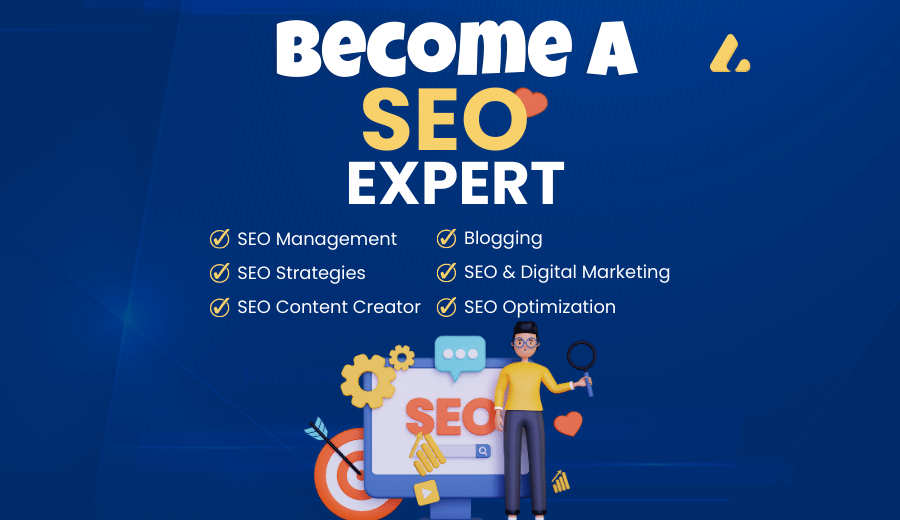
A solid SEO strategy will help you rank on search engines.
Firstly, Let’s discuss SEO and what it is.
SEO stands for “search engine optimization.” This is the process of improving a website’s technical configuration, content relevance, and link popularity to increase its visibility on search engines like Google and Bing. The better visibility your pages have in search results; the more findable, relevant and popular your website will become.
Search engines identify the better SEO and recommend that website to the user by ranking relevant listings on the search engine results page (SERP) that matches their search criteria. Search engines do this by scanning meta descriptions, headings, schema markup and image alt texts.
Simply put, Search engines use SEO to help people find what they are looking for online.
Why Does Your Website Need SEO?
Most social media platforms like Instagram, Facebook, TikTok, and Pinterest have built-in SEO tools. And so it is easier to optimize the content on these social media websites. On the other hand, if you own a website you use for blogging or eCommerce, SEO optimization is trickier. However, there are several reasons why your website needs good SEO optimization.
- Organic Traffic. A considerable challenge is to get visitors to your website. Your website might need optimization if you are not ranking number one or on the first search results page. That’s where SEO comes in. It’s a critical source of organic traffic to perpetuate visitors to your site.
- Search intent. Also known as user intent. It is the main reason a user types a query into a search engine. People type precisely what they’re looking to find into a search engine. For example, let’s say you are hungry and want to cook a quick meal. You will probably search for “quick rice recipes.”
- Data and feedback. Reading and interpreting the analytics data can help you improve your website by identifying what works and doesn’t.
SEO optimization is a beneficial skill to have. However, the most significant barrier is that SEO requires technical knowledge in most cases.
In this guide, we will identify some tips and tools to help improve your website.
How do you Rank your website higher on SERP?
There are four simple steps to follow:
SEO Optimization
Firstly, check how fast the pages on your website load. Your website’s speed will help it rank better.
- You can quickly check this manually by visiting your website in incognito mode. Usually, most hosting providers like hosting are optimized for speed. Alternatively, you can use Google’s PageSpeed Insights to get some recommendations. However, remember that very few websites get a high score from this tool.
- If your website is built on WordPress, a caching plugin such as LiteSpeed Cache will do the trick and easily compresses files so your page can load faster.
Duplicate Content
Once your website’s speed is optimized, the next step is to check for duplicate content. Duplicate content confuses search engines and forces them to one of the identical pages to rank first. In other words, if the same information is available across multiple pages and URLs, it could be considered duplicate content.
Duplicate content can have negative impacts on your website. So, remove any apparent duplicates. Then, choose to update your blogs rather than make copies.
Content Optimization
For content optimization, your website needs high-quality content and keywords.
- Keyword Research – There are quite a few keyword research tools available; some are free, while some are paid and get very pricey. Google has a free keyword research tool, but two of the popular paid versions are Ahrefs and Semrush, and both have limited versions that you can use for free.
- Content Creation – After identifying the trending keywords. It is time to create your content. Remember that your keywords should align with the user’s search intent and thus answer their questions.
- Page Structure – Divide your page into sections using headings (H1 – H6). Keep relatively short paragraphs, as this is good for readability. Include media such as images, videos, and diagrams to make the content engaging
Page Optimization
Google and other search engines focus on metadata to find and display your website on SERPs. Hence, page optimization is essential in ranking. Here is what you focus heavily on.
- The title Tag is the name or h1 heading of your page. Ensure that the full keyword or phrase opens the title of the page. Try to keep a limit of 2 keywords per title. One primary keyword and one long tail keyword are ideal. Also, try to keep title tags under 60 characters.
- Meta Descriptions. This short paragraph appears below a title tag in search results. At the same time, meta descriptions don’t directly affect your ranking. They still have an essential role since they significantly impact click-through rates. Meta descriptions are used to convince users to click.
They are various tools available to help with page optimization. For example, one popular tool for WordPress is Yoast.
Backlinks
The last step to improving SEO is link building. Backlinks are considered a popularity indicator and come from how users interact with your website.
Backlinks are valuable for SEO because they are like a stamp of approval. They are incoming links from other websites. Therefore, you want lots of backlinks from external, reputable sites. Backlinks are what most search engines refer to as off-site SEO.
